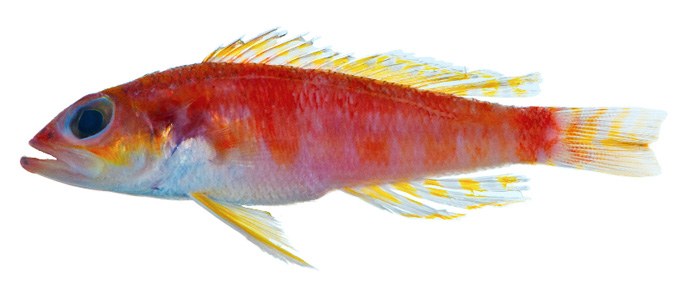Chelidoperca sp. is a relatively obscure genus with only seven previously known species mostly from the Indo-Pacific and from very deep waters. Liopropoma sp. is the most closely related genus reefkeepers may be familiar with. Chelidoperca santosi is named after Mudjekeewis Santos, a scientist at the National Fisheries Research and Development Institute; we bring this up only because it seems a lot of newly discovered fish are being named after Santos, who has contributed a lot of work to the discovery of new reef species.
The fish market vendor claims this specimen arrived in the mouth of a large grouper caught from Palawan, Philippines. Researchers were later able to identify the same unknown species preserved at the Museum Victoria, Australia. On the basis of this single fish market holotype and confirmation by the preserved paratype at Museum Victoria, scientists described the new species.
No further information is available about Chelidoperca santosi, although we can safely assume it is also a very deepwater tropical basslet species (think: 80-300 meters deep); the museum paratype was collected at 146 meters. Live specimens are virtually unheard of. The holotype is amazing as it is; we can only imagine how beautiful a living C.santosi is.
It’s a safe bet many more living treasures like C.santonsi exist in the twilight zone of the Coral Triangle.











0 Comments